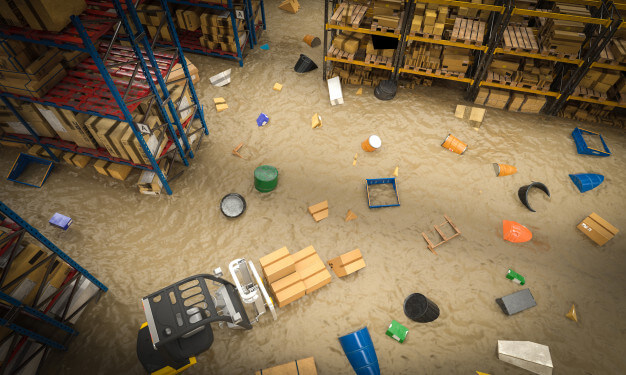Flooding is a risk to any business, whether you are inland or near the coastline. In fact, one in four businesses that shuts down from a natural disaster never reopens, and more than 80 percent of all presidentially declared natural disasters involve flooding. According to the U.S. government, the average commercial flood claim in the past 10 years has been around $33,000, and property damage due to flooding usually adds up to more than $6 billion annually.
Floods have many causes and can occur anywhere in the country, but here are some of the most common events that lead to flooding:
- Storm surges in hurricane-prone areas.
- Flash flooding, caused by periods of intense rainfall.
- Mudslides, caused by long, heavy rain periods on a hill or mountainside.
- Snowmelt, caused by the still-frozen ground unable to absorb excess water.
- Ice jams, when an ice chunk flowing in a river or stream blocks, dams or narrows passageways, causing overflow.
- Urban development, such as new construction and or ground paving, which alters the topography by not allowing the land to drain properly.
You should be aware that a general policy will not cover flood damage, and this type of insurance is only available through the National Flood Insurance Program (NFIP). The NFIP will cover all the types of floods discussed above, including mudslides, though it is important to note that it does not cover landslides even if they are caused by heavy rain. To make sure you get a fair price, every commercial flood agent answers to this government agency; therefore, flood insurance is backed by the government but sold through private insurers.


